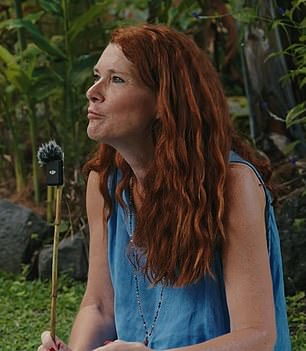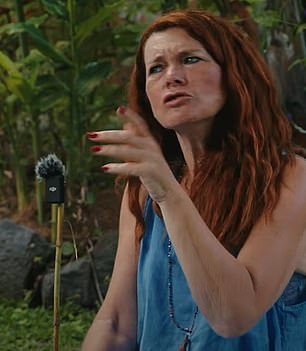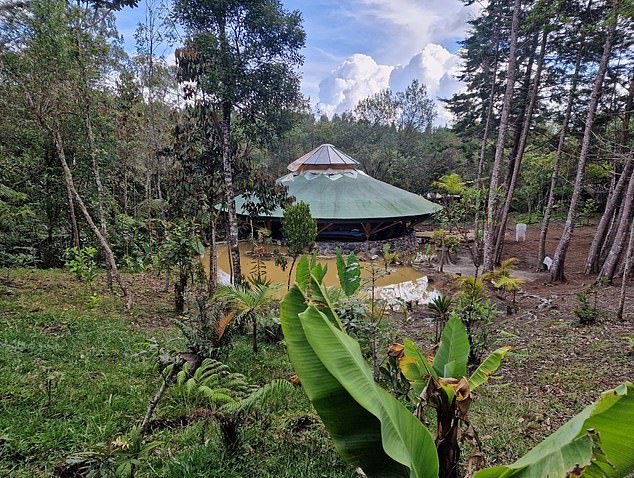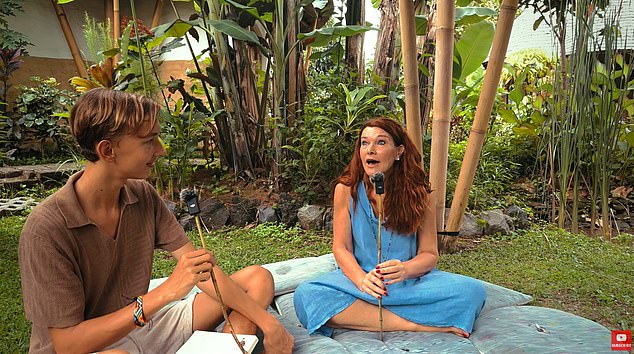I took ayahuasca 45 times and discovered my past lives as a witch and prophet
A woman who used ayahuasca 45 times in three months describes her experience as “like watching a Netflix series” about her “past lives.”
Tatjana Strobel, 53, from Germany, drank the hallucinogenic drink every other day during ceremonies at a retreat in Bolivia with a group of ten other attendees.
She told DailyMail.com about her experiences, saying she saw herself in new roles each time, including philosopher, concertist, witch and prophet.
The author is overwhelmingly positive about her travels, claiming the drug combated her phobias of snakes and even death. Some of her most bizarre visions include “marrying herself” and discovering that she has visited Plato’s fictional island of Atlantis.
Ayahuasca, which is illegal in the US, has surged in popularity in recent years for its purported ability to “reset” the mind and alleviate mental health issues. Retreats outside the US that offer it have amassed a celebrity following, including Will Smith, Chelsea Handler and even Prince Harry.
Tatjana Strobel, 53, a published author, revealed that she used ayahuasca every other day for three months. She described the experience as a “Netflix series” from her past lives


Among some of her more bizarre claims, Ms. Strobel also said that ayahuasca also revealed to her that she was “from Atlantis” and that there is a line of souls waiting to come to Earth.
Normally it lasts for a few days, with the drink being distributed during ceremonies led by a ‘shaman’, or spiritual leader.
Some retreats extend over several weeks and involve participants taking ayahuasca as many as 22 times. Shamans report taking it as many as 100 times a year.
Ms. Strobel decided to go on a longer, three-month retreat in 2022, after having previously tried ayahuasca at least six times and being “curious” about how the psychedelic drug could change her life.
She described her experience as follows: ‘It was beautiful, you know, it was like a series, if I finished one night I would start again the next night.
‘I saw different things almost every time I picked it up. I was a concertist, I was a witch – this happened a lot – I was someone who helped others give birth, I was a writer, I was a prophet, I was everything.”
“It really was like watching a series on Netflix.”
The substance is known to cause extreme nausea and diarrhea within minutes of ingestion.
However, Ms. Strobel said she had little concern about the possible long-term effects. If she felt unwell, she would refrain from taking the drug the next day, she said.

People take ayahuasca on retreats, such as the Ambi Resort in Colombia (photo above)

Users normally vomit after taking the drug, before experiencing a ‘trip’ that lasts several hours (above is the Ambi Resort in Colombia)
‘My body is very sensitive. It means that if I eat something that is not good for my body, I stop.’
Ayahuasca is made from a mixture of plants from the Amazon rainforest, which are boiled into a stew and then consumed. Many users have previously described the taste as ‘nasty’.
These plants contain DMT, a Schedule I substance considered as dangerous in the US as heroin, LSD and MDMA, which gives the drug its psychedelic properties.
According to experts, it can disrupt brain activity, including communication between different areas, leading to the vibrant and colorful images that many users see.
Some scientists have been investigating the drug’s potential as a treatment for post-traumatic stress disorder (PTSD) alongside ketamine, with small studies suggesting it could help rewire the brain or allow people to “reprocess” traumatic experiences.
Research has also suggested that it might improve brain health by stimulating the production of a chemical that slows neurodegeneration.
But concerns have been raised about possible negative effects on mental health.
A Study from 2022 found that at least half of the 10,000 adults reported negative mental health effects, including depression and hallucinations, in the weeks to months after taking ayahuasca.
Dr. Greg Fonzo, a psychiatrist at the University of Texas Dell Medical School, Austin, said he would be “concerned” about patients using so much ayahuasca.
‘It is unclear whether frequent use can have harmful effects on mental health and cognitive functioning’.
‘There are also concerns and reports of possible heart defects.’ DMT is known to increase heart rate while still active in the body.
Andrew Gallimore, a computational neuroscientist at the Okinawa Institute of Science in Japan, added that he would be concerned about the dramatic purging – or vomiting – that could be caused, saying this carried the risk of dehydration and damage to the esophagus.
He added: ‘In addition, the psychological integration of what is often an extremely intense and psychologically demanding experience is as important as the experience itself.
“This can take days or longer, so it is difficult to imagine how the experiences can be properly integrated when they are combined in such rapid succession.”
Psychological integration after ayahuasca refers to the process of integrating deep experiences and insights into daily life and sense of self.
There have been a number of reported deaths among people who have used ayahuasca, although in both cases these were linked to another substance being taken alongside it.
The cases include a 22-year-old in Florida who consumed ayahuasca mixed with kambo, a poisonous poison from a tree frog. He died after a seizure caused by drinking excessive water after vomiting.

Tatjana Strobel shared her experience in a podcast with Alex Renko, a wealthy 15-year-old who regularly posts on social media about psychedelics
Ms Strobel said she had always “feared” drugs – avoiding alcohol – but decided to try ayahuasca in the hope it would improve her life.
She says that the first time she took ayahuasca she didn’t throw up, which earned her the nickname “dominator.”
But at the end of the three-month retreat she became very ill.
Dr Daniel Perkins, who directs the University of Melbourne’s Psychedelic Research Centre and studies the drug, has a more positive view of the drug’s impact.
He said a research report he wrote found there was no link between the number of times ayahuasca had been consumed in the past year and negative effects on mental health.
He added: ‘But there is some association with reporting adverse effects on physical health. By far the most common was vomiting or nausea at the time of use.’
Groups that run ayahuasca retreats claim that shamans may drink ayahuasca up to 100 times a year and that it is used regularly in indigenous cultures without causing serious negative health effects.
To others considering taking ayahuasca, Ms. Strobel says: ‘If you’re on a journey somewhere it might help you, but otherwise it might not help you find who you are.’
